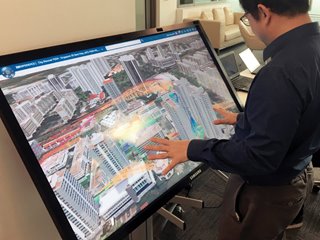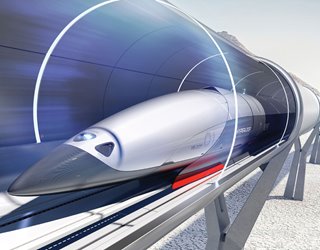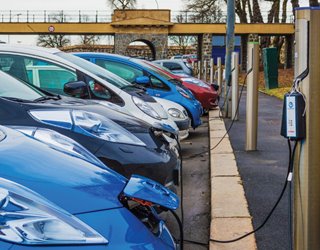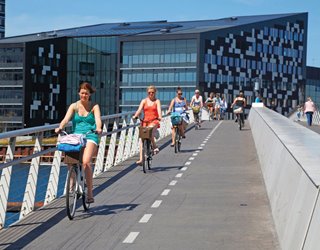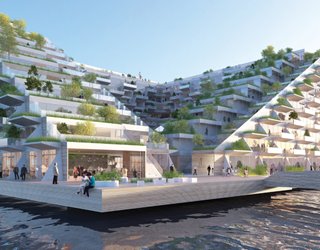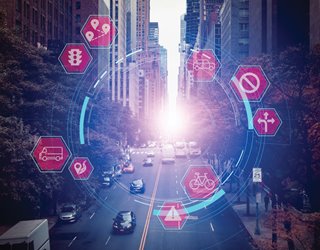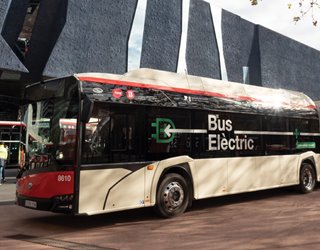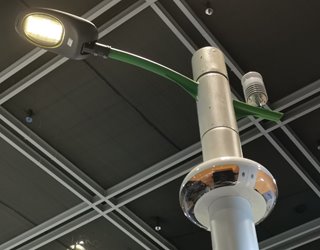Top 10 Growing Smart Cities
Top 10 Growing Smart Cities


Connectivity and the Internet of Things bring efficiencies in services to make cities work smarter. Photo: Getty
As more people surge into urban areas around the world, the swelling population strains infrastructure and services. Global cities now account for more than half of the world’s population, and the United Nations projects the number to balloon to 68 percent by mid-century. How will all of these residents move through and around cities, and how will cities provide energy, water, sanitation and other basic needs? By leveraging technology based on the Internet of Things (IoT) and integrating an online population into new systems that make a city work—a new and evolving smart city.
Politicians and urban planners have been laying the groundwork to leverage technology to meet the demands of residents and provide greater efficiencies in delivering services in the quest to create these smart cities. Much of this work is in its infancy, as cities build a “smart” foundation. After about 10 years, they are entering a new developmental phase as digital solutions are harnessed to deliver real-time information to users and providers through connected applications.
What makes a city smart? Generally, it requires intelligent IoT solutions that optimize infrastructure and government to better engage citizens in the management of services. Sensors, networks, and applications collect data on energy usage, traffic volume and patterns, pollution levels, and other topics which are then analyzed and used to correct and predict usage and patterns. Making that data available to everyone through open-access systems allow citizens and businesses to leverage that information for their own purposes.
Listen to a Related ASME TechCast Episode: Connecting Cars with Smart Cities
Perhaps more so, smart cities require leaders with a long-term vision and people committed to collaboration. Multiple agencies, consultants, and private firms track the development of smart cities, and there are eight generally recognized subjects that combine to make a city smart:
• Mobility
• Healthcare
• Security
• Water
• Energy
• Engagement and Community
• Economic Development and Housing
• Waste
Within each of those subjects, three layers work together to make a smart city operate. According to a recent report by McKinsey, the first layer is a technology base that includes a critical mass of smartphones and sensors connected by high-speed communication networks. A second layer of specific applications translates the constant stream of raw data into alerts, insights, and action.
The third application may be the most important: getting buy-in and participation from the public. Apps that show traffic volume in real time, for instance, allow drivers and pedestrians to better plan travel routes and adapt at a moment’s notice. That capability speeds everyone along and, hopefully, prevents further backup in the congested area.
Dozens of applications are already available in each of the developing areas. Real-time crime mapping, for instance, helps in policing; telemedicine brings health practitioners into patients’ homes; digital tracking of waste receptacles tells a garbage hauler when a can is full; open databases allow business owners to adapt based on traffic or pedestrian flow; online connection platforms provide internet access or battery charging for personal devices. The list goes on.
Some cities are further along in developing these services than others, with those in Asia and Europe leading the pack. Dubai and Singapore, for instance, have large, signature infrastructure and building projects carved into their plans. All are embracing IoT.
Here are 10 cities that are widely recognized as leading the way.
The southeast Asia city-state is the world’s second most densely populated, with some 8,000 people per square kilometer. Faced with an aging population, the government is looking to digital advancements to raise productivity in an already advanced economy. Its Smart Nation vision aims to digitally collect information from throughout the city using sensors linked to aggregation boxes. Data collected on traffic volume or pedestrian activity is sent to appropriate agencies for analysis and action in delivering services. Almost 95 percent of homes have broadband access and open sourcing brings the information to citizens and the private sector to leverage the data for personal or business reasons.
For planning, the National Research Foundation is leading the development of Virtual Singapore, a dynamic 3D city model and collaborative data platform. It has been made available to public and private firms to develop tools for testing concepts and services, such as simulating crowd dispersions from future sport venues. Because 80 percent of residents live in public housing, government agencies are working with private firms to test smart home technologies, such as home energy and water management systems and monitoring systems for the elderly.
Smart technologies are integrated into housing through a framework that considers planning, environment, buildings, and living. For instance, engineers analyze wind flow, solar penetration, and shaded areas to better design and site new buildings. By 2022, the government plans to implement intelligent, energy-efficient lighting for all public roads, and have solar panels installed on rooftops of 6,000 buildings.
The emirate is in the middle of a seven-year Dubai 2021 plan to digitalize all government services, including some 100 initiatives encompassing transport, communications, infrastructure, electricity, economic services, and urban planning. Almost 90 government services now are digitalized, accessible through the DubaiNow app. Residency services is one area, where one can apply for an entry permit or sponsor a family. City officials say they will save 900 million UAE dirhams ($245 million) in eliminating paper transactions when the project is complete. A monitoring system for bus drivers using artificial intelligence has greatly reduced traffic accidents caused by fatigue, according to the Road and Transit Authority.
Take this Quiz to Test How Much Do You Know About Smart Cities?
Already the city has three autonomous police stations where people can pay fines or report incidences without talking to a person. A fourth, floating autonomous station was recently announced for the World Islands, a man-made archipelago designed to look like the Earth’s surface from above. The development is expected to be built out quickly.
Dubai is betting on a host of high-tech projects using innovative technology to bolster its status. Contractors recently built a 31-foot-tall, 6,889-square-foot concrete building using a 3D printer, an example of how the emirate plans to build future developments. Perhaps the best known project is the Dubai-Abu Dhabi hyperloop. It could cost $6 billion when the 151-kilometer-long system is completed. A 10-kilometer section is nearing completion.
The Norwegian capital is regularly featured on global lists of smart cities. Its efforts to address climate change are part of the reason. Buildings account for some 40 percent of energy consumption globally, and Oslo is embracing a wide use of sensors to control lighting, heating, and cooling. The city’s goal to cut emissions by 36 percent by 2020 and as much as 95 percent by 2030 is creating opportunity in developing electric vehicles, a smart grid, and EV-charging technology. Already, there are more than 2,000 charging stations for electric vehicles, whose owners do not have to pay sales tax and are entitled free parking, charging, and transport on ferries.
Norway has announced plans to build a sustainable smart city on 260 acres near Oslo’s airport to develop technology-driven communities. It is designed to be powered only with renewable energy, with excess being sold back into the grid. Sensor-based systems will operate automatic street and building lighting along with waste management and security. Only electric vehicles will be permitted, but planners eventually want self-driving vehicles.
The Danish capital is moving toward smart development integrated with its own aggressive environmental policies. The incubator Copenhagen Solutions Lab received an award in 2017 for a system that monitors traffic, air quality, waste management, energy use, and other items and compares operations in real time. It connects parking systems, traffic lights, buildings, smart metering, and charging systems for electric vehicles to direct traffic in real time, and optimize energy use according to fuel prices, traffic movement, and weather. The ability to analyze, measure, and compare all of this data is meant to drive better efficiency in delivering services.
How does all of this trickle down to users?
Cyclists—and there are many in Copenhagen, as half of city residents bike to work—are using an app developed from all of this data that guides them through city streets and tells them how fast they need to pedal to make the next green light. Another plans routes, using feedback from users to improve recommendations. It also measures distance cycled and calories burned. Another online group warns of bicycle-related police activity, information cyclists can use to avoid fines.
The city was one of the first to experiment with smart initiatives. Boston opened its Innovation District at its seaport in an effort to be a public catalyst for innovation, and it is credited with helping create over 200 startups. Its masterplan centers on citizen participation, or “participatory urbanism,” using a collection of apps for citizens to receive parking information, report service issues, or communicate with each other. Users can report potholes or graffiti from anywhere in the city or track a child’s school bus.
Participatory Chinatown is a video game simulation to help engage the community in planning and development. Boston’s traffic snarls are famous, and a campaign to ease mobility is beginning based on mobility microhubs. A digital kiosk, it will provide real-time information on buses and trains as well as bike-shares, car-shares, and other services. Smart sensors will link the microhubs with networked traffic signals in known congested districts.
The Dutch city has enthusiastically embraced smart concepts and technology, creating an open database with 12,000 datasets garnered from every urban district. Through its IoT Living Lab, a 3,700-square-meter area fitted with IoT-enabled beacons, users can access data using Bluetooth devices. The beacons use LoRaWan, a machine-to-machine protocol, to send data packets to distances reaching three kilometers. Many residents use bicycles but car-sharing platforms pair drivers and passengers, and autonomous vehicles shuttle drivers through five intersections between a subway station and an office park.
A public-private project is building a small smart grid in a housing development, where power is distributed and stored based on demand. Another smart grid project under development uses carbon dioxide to generate electricity. Amsterdam also sports smart lighting with dimmable LED lights. Pedestrians and cyclists, however, can use an app to increase the light when passing by and the lights dim after they pass.
The city launched a pilot program that placed hundreds of smart sensors and a low-power wide area network throughout several business districts. Collected data will help manage trash pickup; waste containers fitted with sensors monitor when the cans are full and relay that information to disposal crews. Throughout the city, online charging kiosks are replacing public phone booths to enable internet connectivity.
The police department has tested web-based software from HunchLab that uses historical crime data, terrain modeling, and other information to predict and respond to crime. The test produced a marked decrease in violent crime, and now other city agencies are interested.
The mayor’s Civic Innovation Challenge is an incubator platform for startups to develop solutions for a wide range of urban issues. It dovetails with the policy initiative to make public data as open as possible, encouraging collaboration between public, tech, and academia sectors.
Connected London is the city’s program to provide 5G connectivity to the entire city, requiring new developments to provide full fiber-optic coverage. To make it work, officials say 5G cells must be placed 200 meters apart. One idea is to use drones to spot unused space where cellular antennas can be installed. Another initiative aims to provide open access to Wi-Fi in public buildings and on the streets.
London’s iconic lampposts also are being fitted with a collection of sensors and charging points for electric vehicles.
The Catalonian city consistently draws praise for embracing smart technology, which is credited with invigorating an economy that deteriorated in the 1980s after its textile and other industries shriveled. In 2011, the city hosted the first Smart City Expo and World Congress to promote “a self-sufficient city of productive neighborhoods at human speed, inside a hyper-connected zero emissions metropolitan area.”
Further Reading: IoT 2020 Trends for Everyday Consumer Products
Spain’s second-largest city now is saturated with LED lightpole mounted sensors that monitor traffic, air quality, pedestrian activity, and noise, and which can dim or switch off lights as needed. Smart bins fitted with vacuums suck waste into underground storage, reducing foul odors and decreasing the number of trips from collection trucks. They also provide city managers with data on waste levels and where it accumulates faster or slower, leading to greater operational efficiencies. The city’s bike-sharing system was one of the first, aimed at reducing the number of cars, especially in the densely populated and heavily trafficked city center.
At the beginning of 2019, Hong Kong’s secretary for innovation and technology announced a major government push to speed smart city services. More than 70 initiatives were launched in 2017, and the newest push covers what the office calls “smart government” and “smart economy.” One is ubiquitous to smart city development: lampposts fitted with sensors. They are cheap and provide a perfect base for fitting out technology. Hong Kong is going a step further, marking them for 5G development.
The 55-kilometer-long Hong Kong-Shuhai-Macao bridge connects mainland China with Hong Kong and Macao. Opened in 2018, it is fitted with 4G service and is being readied for 5G. In Hong Kong itself, 400 smart lampposts will host a 5G test rollout in four neighborhoods.
One attractive feature is a new mobile-friendly city dashboard screen. It uses data gleaned from various government departments to show real-time images, maps, icons, and charts of information such as average traffic speed in different districts and tunnels, as well as temperature, rainfall, or parking availability. As it develops, more data from buses and trains will be added. Observers say more needs to be done to bring small businesses and individuals into the mix and develop a digital economy. Hong Kongers are slow to adopt online banking and other services. One program attacks this by beefing up digital security with biometric measures such as face or voice recognition.
John Kosowatz is senior editor.
Politicians and urban planners have been laying the groundwork to leverage technology to meet the demands of residents and provide greater efficiencies in delivering services in the quest to create these smart cities. Much of this work is in its infancy, as cities build a “smart” foundation. After about 10 years, they are entering a new developmental phase as digital solutions are harnessed to deliver real-time information to users and providers through connected applications.
What makes a city smart? Generally, it requires intelligent IoT solutions that optimize infrastructure and government to better engage citizens in the management of services. Sensors, networks, and applications collect data on energy usage, traffic volume and patterns, pollution levels, and other topics which are then analyzed and used to correct and predict usage and patterns. Making that data available to everyone through open-access systems allow citizens and businesses to leverage that information for their own purposes.
Listen to a Related ASME TechCast Episode: Connecting Cars with Smart Cities
Perhaps more so, smart cities require leaders with a long-term vision and people committed to collaboration. Multiple agencies, consultants, and private firms track the development of smart cities, and there are eight generally recognized subjects that combine to make a city smart:
• Mobility
• Healthcare
• Security
• Water
• Energy
• Engagement and Community
• Economic Development and Housing
• Waste
Within each of those subjects, three layers work together to make a smart city operate. According to a recent report by McKinsey, the first layer is a technology base that includes a critical mass of smartphones and sensors connected by high-speed communication networks. A second layer of specific applications translates the constant stream of raw data into alerts, insights, and action.
The third application may be the most important: getting buy-in and participation from the public. Apps that show traffic volume in real time, for instance, allow drivers and pedestrians to better plan travel routes and adapt at a moment’s notice. That capability speeds everyone along and, hopefully, prevents further backup in the congested area.
Dozens of applications are already available in each of the developing areas. Real-time crime mapping, for instance, helps in policing; telemedicine brings health practitioners into patients’ homes; digital tracking of waste receptacles tells a garbage hauler when a can is full; open databases allow business owners to adapt based on traffic or pedestrian flow; online connection platforms provide internet access or battery charging for personal devices. The list goes on.
Some cities are further along in developing these services than others, with those in Asia and Europe leading the pack. Dubai and Singapore, for instance, have large, signature infrastructure and building projects carved into their plans. All are embracing IoT.
Here are 10 cities that are widely recognized as leading the way.
1. Singapore
The southeast Asia city-state is the world’s second most densely populated, with some 8,000 people per square kilometer. Faced with an aging population, the government is looking to digital advancements to raise productivity in an already advanced economy. Its Smart Nation vision aims to digitally collect information from throughout the city using sensors linked to aggregation boxes. Data collected on traffic volume or pedestrian activity is sent to appropriate agencies for analysis and action in delivering services. Almost 95 percent of homes have broadband access and open sourcing brings the information to citizens and the private sector to leverage the data for personal or business reasons.
For planning, the National Research Foundation is leading the development of Virtual Singapore, a dynamic 3D city model and collaborative data platform. It has been made available to public and private firms to develop tools for testing concepts and services, such as simulating crowd dispersions from future sport venues. Because 80 percent of residents live in public housing, government agencies are working with private firms to test smart home technologies, such as home energy and water management systems and monitoring systems for the elderly.
Smart technologies are integrated into housing through a framework that considers planning, environment, buildings, and living. For instance, engineers analyze wind flow, solar penetration, and shaded areas to better design and site new buildings. By 2022, the government plans to implement intelligent, energy-efficient lighting for all public roads, and have solar panels installed on rooftops of 6,000 buildings.
2. Dubai
The emirate is in the middle of a seven-year Dubai 2021 plan to digitalize all government services, including some 100 initiatives encompassing transport, communications, infrastructure, electricity, economic services, and urban planning. Almost 90 government services now are digitalized, accessible through the DubaiNow app. Residency services is one area, where one can apply for an entry permit or sponsor a family. City officials say they will save 900 million UAE dirhams ($245 million) in eliminating paper transactions when the project is complete. A monitoring system for bus drivers using artificial intelligence has greatly reduced traffic accidents caused by fatigue, according to the Road and Transit Authority.
Take this Quiz to Test How Much Do You Know About Smart Cities?
Already the city has three autonomous police stations where people can pay fines or report incidences without talking to a person. A fourth, floating autonomous station was recently announced for the World Islands, a man-made archipelago designed to look like the Earth’s surface from above. The development is expected to be built out quickly.
Dubai is betting on a host of high-tech projects using innovative technology to bolster its status. Contractors recently built a 31-foot-tall, 6,889-square-foot concrete building using a 3D printer, an example of how the emirate plans to build future developments. Perhaps the best known project is the Dubai-Abu Dhabi hyperloop. It could cost $6 billion when the 151-kilometer-long system is completed. A 10-kilometer section is nearing completion.
3. Oslo
The Norwegian capital is regularly featured on global lists of smart cities. Its efforts to address climate change are part of the reason. Buildings account for some 40 percent of energy consumption globally, and Oslo is embracing a wide use of sensors to control lighting, heating, and cooling. The city’s goal to cut emissions by 36 percent by 2020 and as much as 95 percent by 2030 is creating opportunity in developing electric vehicles, a smart grid, and EV-charging technology. Already, there are more than 2,000 charging stations for electric vehicles, whose owners do not have to pay sales tax and are entitled free parking, charging, and transport on ferries.
Norway has announced plans to build a sustainable smart city on 260 acres near Oslo’s airport to develop technology-driven communities. It is designed to be powered only with renewable energy, with excess being sold back into the grid. Sensor-based systems will operate automatic street and building lighting along with waste management and security. Only electric vehicles will be permitted, but planners eventually want self-driving vehicles.
4. Copenhagen
The Danish capital is moving toward smart development integrated with its own aggressive environmental policies. The incubator Copenhagen Solutions Lab received an award in 2017 for a system that monitors traffic, air quality, waste management, energy use, and other items and compares operations in real time. It connects parking systems, traffic lights, buildings, smart metering, and charging systems for electric vehicles to direct traffic in real time, and optimize energy use according to fuel prices, traffic movement, and weather. The ability to analyze, measure, and compare all of this data is meant to drive better efficiency in delivering services.
How does all of this trickle down to users?
Cyclists—and there are many in Copenhagen, as half of city residents bike to work—are using an app developed from all of this data that guides them through city streets and tells them how fast they need to pedal to make the next green light. Another plans routes, using feedback from users to improve recommendations. It also measures distance cycled and calories burned. Another online group warns of bicycle-related police activity, information cyclists can use to avoid fines.
5. Boston
The city was one of the first to experiment with smart initiatives. Boston opened its Innovation District at its seaport in an effort to be a public catalyst for innovation, and it is credited with helping create over 200 startups. Its masterplan centers on citizen participation, or “participatory urbanism,” using a collection of apps for citizens to receive parking information, report service issues, or communicate with each other. Users can report potholes or graffiti from anywhere in the city or track a child’s school bus.
Participatory Chinatown is a video game simulation to help engage the community in planning and development. Boston’s traffic snarls are famous, and a campaign to ease mobility is beginning based on mobility microhubs. A digital kiosk, it will provide real-time information on buses and trains as well as bike-shares, car-shares, and other services. Smart sensors will link the microhubs with networked traffic signals in known congested districts.
6. Amsterdam
The Dutch city has enthusiastically embraced smart concepts and technology, creating an open database with 12,000 datasets garnered from every urban district. Through its IoT Living Lab, a 3,700-square-meter area fitted with IoT-enabled beacons, users can access data using Bluetooth devices. The beacons use LoRaWan, a machine-to-machine protocol, to send data packets to distances reaching three kilometers. Many residents use bicycles but car-sharing platforms pair drivers and passengers, and autonomous vehicles shuttle drivers through five intersections between a subway station and an office park.
A public-private project is building a small smart grid in a housing development, where power is distributed and stored based on demand. Another smart grid project under development uses carbon dioxide to generate electricity. Amsterdam also sports smart lighting with dimmable LED lights. Pedestrians and cyclists, however, can use an app to increase the light when passing by and the lights dim after they pass.
7. New York
The city launched a pilot program that placed hundreds of smart sensors and a low-power wide area network throughout several business districts. Collected data will help manage trash pickup; waste containers fitted with sensors monitor when the cans are full and relay that information to disposal crews. Throughout the city, online charging kiosks are replacing public phone booths to enable internet connectivity.
The police department has tested web-based software from HunchLab that uses historical crime data, terrain modeling, and other information to predict and respond to crime. The test produced a marked decrease in violent crime, and now other city agencies are interested.
8. London
The mayor’s Civic Innovation Challenge is an incubator platform for startups to develop solutions for a wide range of urban issues. It dovetails with the policy initiative to make public data as open as possible, encouraging collaboration between public, tech, and academia sectors.
Connected London is the city’s program to provide 5G connectivity to the entire city, requiring new developments to provide full fiber-optic coverage. To make it work, officials say 5G cells must be placed 200 meters apart. One idea is to use drones to spot unused space where cellular antennas can be installed. Another initiative aims to provide open access to Wi-Fi in public buildings and on the streets.
London’s iconic lampposts also are being fitted with a collection of sensors and charging points for electric vehicles.
9. Barcelona
The Catalonian city consistently draws praise for embracing smart technology, which is credited with invigorating an economy that deteriorated in the 1980s after its textile and other industries shriveled. In 2011, the city hosted the first Smart City Expo and World Congress to promote “a self-sufficient city of productive neighborhoods at human speed, inside a hyper-connected zero emissions metropolitan area.”
Further Reading: IoT 2020 Trends for Everyday Consumer Products
Spain’s second-largest city now is saturated with LED lightpole mounted sensors that monitor traffic, air quality, pedestrian activity, and noise, and which can dim or switch off lights as needed. Smart bins fitted with vacuums suck waste into underground storage, reducing foul odors and decreasing the number of trips from collection trucks. They also provide city managers with data on waste levels and where it accumulates faster or slower, leading to greater operational efficiencies. The city’s bike-sharing system was one of the first, aimed at reducing the number of cars, especially in the densely populated and heavily trafficked city center.
10. Hong Kong
At the beginning of 2019, Hong Kong’s secretary for innovation and technology announced a major government push to speed smart city services. More than 70 initiatives were launched in 2017, and the newest push covers what the office calls “smart government” and “smart economy.” One is ubiquitous to smart city development: lampposts fitted with sensors. They are cheap and provide a perfect base for fitting out technology. Hong Kong is going a step further, marking them for 5G development.
The 55-kilometer-long Hong Kong-Shuhai-Macao bridge connects mainland China with Hong Kong and Macao. Opened in 2018, it is fitted with 4G service and is being readied for 5G. In Hong Kong itself, 400 smart lampposts will host a 5G test rollout in four neighborhoods.
One attractive feature is a new mobile-friendly city dashboard screen. It uses data gleaned from various government departments to show real-time images, maps, icons, and charts of information such as average traffic speed in different districts and tunnels, as well as temperature, rainfall, or parking availability. As it develops, more data from buses and trains will be added. Observers say more needs to be done to bring small businesses and individuals into the mix and develop a digital economy. Hong Kongers are slow to adopt online banking and other services. One program attacks this by beefing up digital security with biometric measures such as face or voice recognition.
John Kosowatz is senior editor.
